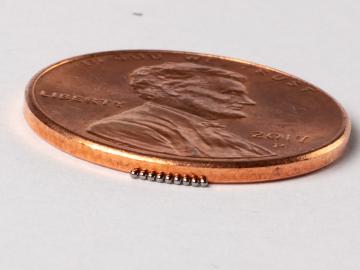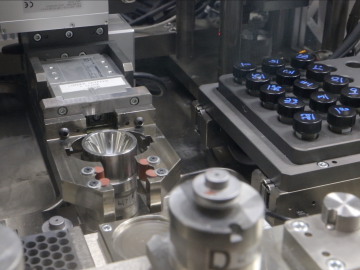
Filter News
Area of Research
- (-) Biology and Environment (47)
- (-) Energy Science (74)
- (-) National Security (12)
- (-) Nuclear Science and Technology (18)
- (-) Supercomputing (59)
- Advanced Manufacturing (2)
- Biology and Soft Matter (1)
- Computational Engineering (1)
- Computer Science (5)
- Electricity and Smart Grid (3)
- Energy Frontier Research Centers (1)
- Functional Materials for Energy (1)
- Fusion and Fission (10)
- Fusion Energy (7)
- Isotope Development and Production (1)
- Isotopes (5)
- Materials (84)
- Materials for Computing (10)
- Mathematics (1)
- Neutron Science (27)
- Nuclear Systems Modeling, Simulation and Validation (1)
- Quantum information Science (9)
- Sensors and Controls (1)
News Topics
- (-) Advanced Reactors (17)
- (-) Grid (46)
- (-) Nanotechnology (18)
- (-) Physics (12)
- (-) Quantum Science (27)
- (-) Space Exploration (10)
- 3-D Printing/Advanced Manufacturing (86)
- Artificial Intelligence (53)
- Big Data (37)
- Bioenergy (67)
- Biology (83)
- Biomedical (34)
- Biotechnology (18)
- Buildings (39)
- Chemical Sciences (21)
- Clean Water (19)
- Composites (19)
- Computer Science (125)
- Coronavirus (33)
- Critical Materials (12)
- Cybersecurity (28)
- Energy Storage (75)
- Environment (148)
- Exascale Computing (29)
- Fossil Energy (2)
- Frontier (32)
- Fusion (12)
- High-Performance Computing (59)
- Hydropower (10)
- Isotopes (8)
- Machine Learning (32)
- Materials (50)
- Materials Science (47)
- Mathematics (7)
- Mercury (10)
- Microelectronics (1)
- Microscopy (20)
- Molten Salt (5)
- National Security (38)
- Neutron Science (27)
- Nuclear Energy (46)
- Partnerships (17)
- Polymers (14)
- Quantum Computing (20)
- Security (18)
- Simulation (28)
- Software (1)
- Statistics (1)
- Summit (48)
- Transportation (73)
Media Contacts

Using the Titan supercomputer at Oak Ridge National Laboratory, a team of astrophysicists created a set of galactic wind simulations of the highest resolution ever performed. The simulations will allow researchers to gather and interpret more accurate, detailed data that elucidates how galactic winds affect the formation and evolution of galaxies.

A new method developed at Oak Ridge National Laboratory improves the energy efficiency of a desalination process known as solar-thermal evaporation.

For the first time, Oak Ridge National Laboratory has completed testing of nuclear fuels using MiniFuel, an irradiation vehicle that allows for rapid experimentation.

OAK RIDGE, Tenn., May 7, 2019—Energy Secretary Rick Perry, Congressman Chuck Fleischmann and lab officials today broke ground on a multipurpose research facility that will provide state-of-the-art laboratory space

In a step toward advancing small modular nuclear reactor designs, scientists at Oak Ridge National Laboratory have run reactor simulations on ORNL supercomputer Summit with greater-than-expected computational efficiency.

Scientists at Oak Ridge National Laboratory have developed a low-cost, printed, flexible sensor that can wrap around power cables to precisely monitor electrical loads from household appliances to support grid operations.

OAK RIDGE, Tenn., March 11, 2019—An international collaboration including scientists at the Department of Energy’s Oak Ridge National Laboratory solved a 50-year-old puzzle that explains why beta decays of atomic nuclei

Gleaning valuable data from social platforms such as Twitter—particularly to map out critical location information during emergencies— has become more effective and efficient thanks to Oak Ridge National Laboratory.
OAK RIDGE, Tenn., Feb. 12, 2019—A team of researchers from the Department of Energy’s Oak Ridge and Los Alamos National Laboratories has partnered with EPB, a Chattanooga utility and telecommunications company, to demonstrate the effectiveness of metro-scale quantum key distribution (QKD).

By automating the production of neptunium oxide-aluminum pellets, Oak Ridge National Laboratory scientists have eliminated a key bottleneck when producing plutonium-238 used by NASA to fuel deep space exploration.


